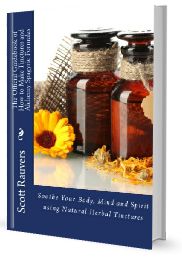News
 New Books
New BooksVisit the Books Page on the homepage to See our Latest Releases
A Scientifically Verified Simple Non-Prescription Formula that Kills Antibiotic Resistant Bacteria Return to Homepage
Related Articles:
Three confirmed cases where Olive Oil allowed 1 man and 2 women to live to over 100 years of age in excellent health
Related Book published by EZ3DBIZ.com
The Official Guidebook of How to Make Tinctures and Alchemy Spagyric Formulas

It is a real blessing to have the technology we do today to prove or disprove if something is valid or not. In the case of healing, we have thousands, if not millions of published reports on the effectiveness or un-effectiveness of various combinations of healing compounds. Many of these are made public at the National Institutes of Health website, which is where the study on Bald's eyesalve, which we are about to discuss is available for viewing.
What if we could look at healing formulas used in Europe during the Middle Ages. The middle ages in Europe began in the 5th century and lasted until approximately the 15th century. The middle ages is marked by the fall of the Western Roman Empire, which then merged into the Renaissance and Age of Discovery. It was a time where new discoveries were being made, much like today.
During the middle ages infections were one of the most feared superbugs. Most notably the Black Plague which lasted from 1346–1353 killed millions of people. It was during this time a formula surfaced that involved a simple mixture of garlic, onion and wine. The name of the formula is known as Bald's Eyesalve. The formula was discovered in the British Library in a 10th century text known as Bald's Leechbook, which is widely considered to be one of the earliest known medical textbooks, making it a formula over 1,000 years old. The formula was also considered to be the "best of leechdoms" healing remedies.
Cited Reference:
A 1,000-Year-Old Antimicrobial Remedy with Antistaphylococcal Activity. Published Jul/Aug 2015. Freya Harrison et al.
The formula was made to heal eye infections, which are similar in composition to germs/bugs that cause staph infections.
Scientists wanted to test the formula to see if it would kill the Methicillin-resistant Staphylococcus aureus (MRSA) infection. This infection is caused by staph bacteria that has become resistant to antibiotics that are used to treat staph infections, making it a kind of modern-day superbug.
Scientists from the microbiology department of the University of Nottingham recreated the remedy and its preparation instructions, including the proper ratios of ingredients (such as using a brass vessel to brew it in) as closely as possible then tested the 1,000 year old formula on large cultures of MRSA.
Part of the instructions called for the formula to stand for nine days, at which time it was to be strained through a cloth (light fermentation) and to use wine from a vineyard known to have existed in the ninth century.
After microbiologists tested the formula on MRSA, methicillin-resistant Staphylococcus aureus (which is a staph bacterium that is ineffective to commonly used antibiotic treatments), they were astonished by the lab results.
The microbiologists reached the conclusion that Bald's eyesalve was as effective as a prescription based antibiotic such as flucloxacillin or dicloxacillin, which are pharmaceutical based remedies used for treating serious MSSA infections.
The microbiologists also asked a U.S. team to run the same tests on live mice. The results were the same. The microbiologists also found that Bald's eyesalve keeps for a long period of time when stored in a refrigerator.
The conclusion of this scientific study? Bald's eyesalve kills up to 90% of MRSA bacteria and that it is as effective as a prescription based antibiotic such as flucloxacillin or dicloxacillin.
In conclusion we can learn a lot from the masters of medicine during the middle ages (also known as the "dark ages". They lived in a period where they needed remedies that were effective to treat all sorts of plagues and infections. Bald's Eyesalve is just one example of this.
I have also written articles on 2 more potent formulas that surfaced around the 1700's known as the Longevity Formula of Count St. Germain and the Swedish Bitters Formula
Thank You for visiting our site and reading our articles and new update. If this information has helped you or someone you know, please consider contributing to this site. Your contribution will ensure the continued publishing of unique and quality articles at no cost to all of our visitors and regular readers.
